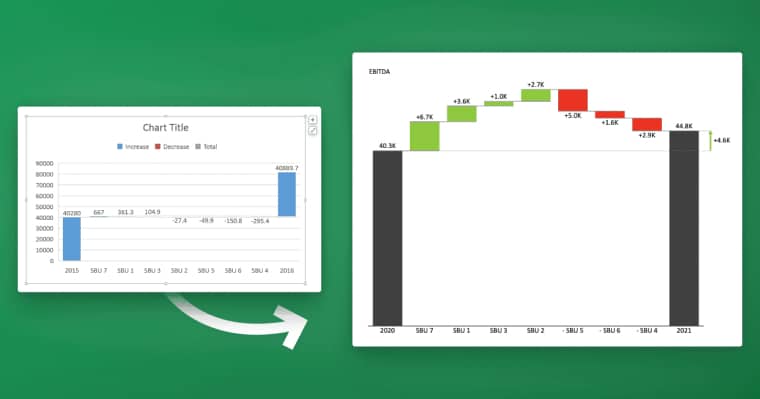Calculating Return on Investment, or ROI, is critical for businesses that want to analyze the success of their investments. ROI measures how much profit a business generates in relation to the amount of money it invests in a project. This can help organizations evaluate whether an investment is worth pursuing or not. In this article, we will discuss the importance of ROI calculations and how to calculate ROI in Excel step-by-step.
Table of Contents
The Importance of ROI Calculations in Business
ROI calculations are essential for businesses as they provide a clear picture of how well an investment is performing. Businesses can use ROI to evaluate investments such as marketing campaigns, new product launches, capital expenditures, and more. By calculating the return on investment, companies can determine which investments generate the most significant returns and adjust their investment strategies accordingly.
Moreover, ROI calculations can help businesses identify areas where they can cut costs and improve efficiency. By analyzing the ROI of different departments or processes, companies can identify areas where they are not getting a good return on investment and make necessary changes to improve their profitability. This can lead to increased revenue and a more streamlined operation.
Another benefit of ROI calculations is that they can help businesses make informed decisions about future investments. By analyzing the ROI of past investments, companies can determine which types of investments are most likely to generate a positive return. This can help businesses make more informed decisions about where to allocate their resources in the future, leading to more successful investments and a stronger bottom line.
Understanding the Basic Elements of ROI
ROI is a simple calculation that involves dividing the profit generated from an investment by the total cost of the investment. The result is a ratio showing how much profit was made for each dollar invested. The formula for calculating ROI is:
ROI = (Gain from Investment – Cost of Investment) / (Cost of Investment) x 100%
ROI is expressed as a percentage, and a higher percentage indicates a more successful investment.
It is important to note that ROI should not be the only factor considered when making investment decisions. Other factors such as risk, time horizon, and potential future growth should also be taken into account. Additionally, ROI can be influenced by external factors such as changes in the market or unexpected expenses. Therefore, it is important to regularly review and adjust investment strategies to ensure continued success.
Different Types of ROI Calculation Methods
There are several types of ROI calculation methods that businesses can use depending on the type of investment they are evaluating. Some of the most commonly used ROI methods are:
- Simple ROI
- Net Present Value (NPV)
- Internal Rate of Return (IRR)
- Payback Period
- Discounted Cash Flow (DCF)
Different types of investments will require different types of ROI calculations. For example, a long-term investment with many cash flows will require a more complex calculation method like NPV or DCF.
Simple ROI is the most basic ROI calculation method and is often used for short-term investments. It is calculated by dividing the net profit by the cost of the investment. This method is useful for quickly evaluating the profitability of a project or investment.
On the other hand, Payback Period is a method that calculates the time it takes for an investment to pay for itself. This method is useful for evaluating investments with a shorter time horizon and can help businesses determine if an investment is worth pursuing based on how quickly it will generate returns.
How to Identify and Collect Data for ROI Calculations
The first step in calculating ROI is to identify all costs and revenues associated with a particular investment. This involves identifying all relevant expenses, including direct costs like labor, materials, and equipment, and indirect costs like overhead expenses. Data on revenue generated from the investment should also be collected, including income from sales, fees, and other income sources. It is important to be as comprehensive as possible when collecting data to ensure that the ROI calculation is accurate.
Once all the relevant costs and revenues have been identified, it is important to organize and analyze the data. This can be done using spreadsheets or specialized software designed for ROI calculations. It is also important to consider the time frame for the investment and the expected return on investment. By analyzing the data, it is possible to determine the ROI and make informed decisions about future investments.
Step-by-Step Guide on Calculating ROI in Excel
Excel is a powerful tool for calculating ROI, and the process is straightforward. Here is a step-by-step guide on how to calculate ROI in Excel:
- Enter the initial cost of the investment in one cell.
- Enter the total revenue generated from the investment in another cell.
- Subtract the initial cost from the total revenue to get the profit from the investment.
- Divide the profit by the initial cost of the investment.
- Multiply the result by 100 to get the ROI percentage.
Here is an example:
ROI = (Total Revenue – Initial Cost) / (Initial Cost) x 100%
Suppose that a business invests $10,000 in a marketing campaign that generates $15,000 in revenue. The ROI calculation would be:
ROI = ($15,000 – $10,000) / ($10,000) x 100% = 50%
It is important to note that ROI is just one metric to consider when evaluating the success of an investment. Other factors, such as the time it takes to see a return on investment and the potential risks involved, should also be taken into account. Additionally, ROI calculations can vary depending on the industry and type of investment. Therefore, it is important to use ROI as a tool in conjunction with other metrics and considerations when making investment decisions.
Tips and Tricks for Accurate ROI Calculation
When calculating ROI, it is important to ensure that all costs associated with an investment are included. Ignoring indirect expenses, such as marketing or advertising costs, may result in an inaccurate calculation. Other tips for accurate ROI calculation include:
- Regularly update the data to reflect any changes or adjustments to the investment.
- Use consistent time periods when calculating revenue and expenses to ensure accuracy.
- Be mindful of potential biases that may skew the calculation.
- Include all costs associated with an investment, including indirect expenses.
It is also important to consider the time frame for calculating ROI. Short-term investments may have a higher ROI, but long-term investments may provide greater overall returns. Additionally, it is important to compare the ROI of different investments to determine which ones are the most profitable. By taking these factors into account, you can ensure that your ROI calculations are accurate and provide valuable insights into the success of your investments.
Using Formulas and Functions to Calculate ROI in Excel
Excel offers many formula and function options to help businesses calculate ROI accurately. Some of the most commonly used functions include:
- SUM – adds up all numbers in a range of cells
- PRODUCT – multiplies numbers in a range of cells
- AVERAGE – calculates the average of a range of cells
By using these formulas and the minus sign (-) for subtraction, businesses can accurately calculate ROI in Excel, even for complex investments with several cash flows.
It is important to note that when calculating ROI in Excel, businesses should also consider the time value of money. This means taking into account the fact that money today is worth more than the same amount of money in the future due to inflation and the potential to earn interest. Excel offers functions such as PV (present value) and FV (future value) to help businesses factor in the time value of money when calculating ROI.
Creating Graphs and Charts for Better Visualization of ROI Data
Graphs and charts are great tools to visualize ROI data and make it easier to analyze. Excel offers several options for creating graphs and charts, including bar graphs, line graphs, and pie charts. These tools can help businesses identify trends and patterns in their ROI data and make strategic decisions accordingly.
One important consideration when creating graphs and charts is to choose the right type of chart for the data being presented. For example, a bar graph may be more appropriate for comparing data between different categories, while a line graph may be better for showing trends over time. It’s also important to choose colors and fonts that are easy to read and visually appealing.
In addition to Excel, there are many other software tools available for creating graphs and charts, such as Tableau and Google Charts. These tools often offer more advanced features and customization options, allowing businesses to create even more sophisticated visualizations of their ROI data.
Understanding the Limitations of ROI Calculations
Despite its many benefits, ROI has limitations that businesses need to consider. ROI calculations do not account for external factors like changes in the market, economic downturns, and other factors that may impact the investment’s profitability. Additionally, ROI does not account for intangible benefits, such as increased brand awareness or customer loyalty, that may also impact an investment’s success.
Comparing Different Investment Options Using ROI Analysis
ROI can also help businesses evaluate and compare different investment options. By calculating the ROI of each potential investment, businesses can determine which options generate the most significant returns and make more informed decisions about where to invest their money.
The Role of ROI in Business Decision Making
ROI is an essential part of business decision-making and can help organizations evaluate investments and adjust their investment strategies accordingly. By calculating ROI, businesses can better understand the success of their investments and make informed decisions about where to allocate their resources.
Future Projections with the Help of ROI Calculations
ROI can help businesses make future projections by using past performance to forecast future outcomes. By analyzing trends and patterns in ROI data, businesses can anticipate potential returns on future investments and make strategic decisions accordingly.
Examples of Successful Businesses that Use ROI Analysis
Many successful businesses use ROI analysis to evaluate investments and make informed decisions about where to invest their money. For example, Amazon uses ROI analysis to evaluate new products and services, while Coca-Cola uses ROI analysis to determine the effectiveness of marketing campaigns and other investments.
Common Mistakes to Avoid When Calculating ROI in Excel
Finally, it is essential to avoid common mistakes when calculating ROI in Excel. Some common mistakes to watch out for include:
- Ignoring indirect expenses
- Using inconsistent time periods
- Forgetting to include all revenue streams
- Failing to account for external factors that may impact the investment’s profitability
By avoiding these mistakes and following the steps outlined in this article, businesses can accurately calculate ROI in Excel and make more informed investment decisions.














